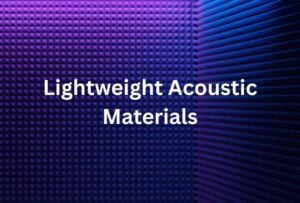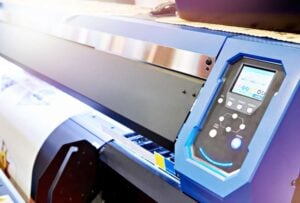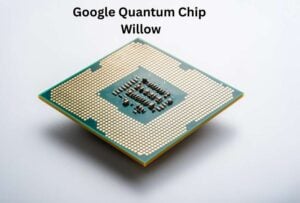Intrinsic and Extrinsic Semiconductors
Estimated reading time: 8 minutes
Semiconductors form the foundation of modern electronics, ranging from smartphones to supercomputers. More importantly, their ability to conduct electricity under specific conditions makes them highly useful for various electronic devices. Furthermore, we can classify them into two main types: intrinsic and extrinsic semiconductors. Understanding these classifications is essential because it provides insight into how electronic components like diodes, transistors, and integrated circuits function.
“It was not so very long ago that people thought that semiconductors were part-time orchestra leaders and microchips were very small snack foods.”
— Geraldine Ferraro

What are Semiconductors?
Semiconductors are materials that electrical conductivity between that of conductors (such as metals) and insulators (such as glass).Temperature, impurities, or external voltage can control their conductivity.
The most commonly used semiconductor material is silicon (Si), followed by germanium (Ge).
Types of Semiconductors
- Intrinsic Semiconductor
- Extrinsic Semiconductor
Intrinsic Semiconductors
An intrinsic semiconductor is a pure semiconductor material without any impurities. In these materials, the number of free electrons and holes (positive charge carriers) is equal.
Key Features of Intrinsic Semiconductors:
- Made of pure elements like silicon (Si) and germanium (Ge).
- At absolute zero temperature, it behaves as an insulator, but as temperature increases, electrons gain energy and jump to the conduction band, making it weakly conductive.
- The number of free electrons = number of holes.
- Conductivity depends only on temperature.
Crystal Structure and Bonding in Intrinsic Semiconductors
The lattice structures of silicon and germanium resemble diamond-like structures, with each atom surrounded by four nearest neighbors.
These atoms form covalent bonds by sharing valence electrons. At absolute zero temperature, the tightly bound valence electrons make the material a perfect insulator.
However, at higher temperatures, some electrons gain thermal energy, break free from their bonds, and become conduction electrons. This leaves behind a vacancy or hole, which behaves as a positive charge carrier.
Working of an Intrinsic Semiconductor
At normal temperatures, some electrons gain enough thermal energy to move from the valence band to the conduction band, leaving behind holes. These electrons and holes move in opposite directions under the influence of an external electric field, leading to a small current. However, intrinsic semiconductors have low conductivity, which limits their practical applications.
In an intrinsic semiconductor, the number of free electrons (n) is equal to the number of holes(p)
n=p=j
where we call j the intrinsic carrier concentration.
Hole Movement and Total Current
A hole is not a real particle but a vacancy left behind when an electron moves. The apparent motion of holes occurs when an electron from a nearby bond fills the vacant site, shifting the hole’s position. Under an applied electric field, holes move towards the negative potential, contributing to the total current. The total current in an intrinsic semiconductor consists of
I = Ie + Ih
where Ie is the electron current, and Ih is the hole current. The recombination of electrons and holes also occurs, maintaining an equilibrium in the charge carrier generation process.
Extrinsic Semiconductors
The conductivity of an intrinsic semiconductor primarily depends on temperature. However, at room temperature, its conductivity is too low for practical applications. Therefore, to improve conductivity, a small amount of impurity is added through a process called doping. As a result, these doped semiconductors are known as extrinsic semiconductors.
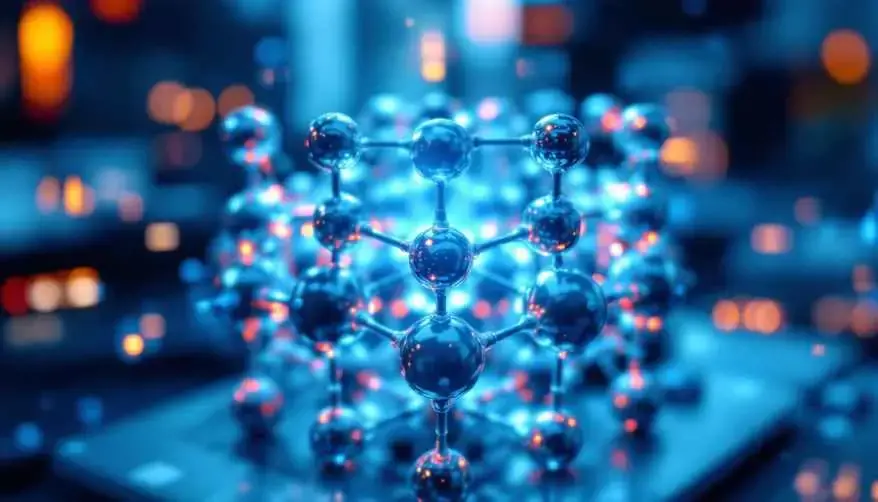
To improve conductivity, someone adds a small amount of impurity (doping). We call these doped semiconductors extrinsic semiconductors.
Doping and Types of Extrinsic Semiconductors
Doping is the process of deliberately adding impurity atoms (dopants) to a pure semiconductor to modify its electrical properties. In this process, the impurity atoms should be of nearly the same size as the host semiconductor atoms to avoid lattice distortion. Depending on the type of impurity added, extrinsic semiconductors are classified into two types:
Types of Dopants in Extrinsic Semiconductors
Depending on the type of impurity added, extrinsic semiconductors are classified into:
- n-type Semiconductors
- p-type Semiconductors
n-type Semiconductors
To form an n-type semiconductor, one dopes an intrinsic semiconductor with a pentavalent impurity (an element with five valence electrons), such as phosphorus (P), arsenic (As), or antimony (Sb).
n(electron) > n(holes)
Characteristics of n-type Semiconductors:
As a result, the extra valence electron from the pentavalent impurity becomes a free electron, increasing conductivity.
In this case, the majority charge carriers are electrons, while the minority charge carriers are holes.
Consequently, conductivity is significantly higher than in intrinsic semiconductors.
For example, when silicon is doped with phosphorus, each phosphorus atom donates an extra electron, which leads to better electrical conduction.
p-type Semiconductors
Doping an intrinsic semiconductor with a trivalent impurity (an element with three valence electrons), such as boron (B), aluminum (Al), or gallium (Ga), forms a p-type semiconductor.
n(holes) > n(electrons)
Characteristics of p-type Semiconductors:
The trivalent impurity creates a vacancy or hole by accepting an electron, thereby increasing hole concentration.
As a result, the majority charge carriers are holes, while the minority charge carriers are electrons.
Consequently, conductivity is higher than in intrinsic semiconductors, but it occurs primarily due to hole movement.
For example, when you dope silicon with boron, the boron atom creates a hole, which allows the flow of current through electron movement.
“The most important technology for the region’s growth was, of course, the semiconductor. William Shockley, who had been one.”
— Walter Isaacson
Differences Between Intrinsic and Extrinsic Semiconductors
| Feature | Intrinsic Semiconductor | Extrinsic Semiconductor |
|---|---|---|
| Purity | Pure, no doping | Doped with impurities |
| Conductivity | Low | High |
| Charge Carriers | Equal number of electrons and holes | Majority carriers (electrons in n-type, holes in p-type) |
| Temperature Dependence | Strongly dependent on temperature | Less dependent on temperature |
| Practical Use | Limited | Used in diodes, transistors, ICs |
Differences Between p-Type and n-Type Semiconductors
| Feature | p-Type Semiconductor | n-Type Semiconductor |
|---|---|---|
| Doping Material | Trivalent impurities (e.g., Boron, Aluminum) | Pentavalent impurities (e.g., Phosphorus, Arsenic) |
| Majority Carriers | Holes (positive charge carriers) | Electrons (negative charge carriers) |
| Minority Carriers | Electrons | Holes |
| Impurity Role | Creates holes by accepting electrons | Donates free electrons |
| Conductivity | Increased by hole movement | Increased by electron movement |
| Charge Nature | Positively charged (due to holes) | Negatively charged (due to electrons) |
| Example | Silicon doped with Boron (B) | Silicon doped with Phosphorus (P) |
| Applications | Used in diodes, transistors, and solar cells | Used in diodes, transistors, and integrated circuits |
Applications of Semiconductors
- Engineers use n-type and p-type semiconductors to form PN junctions, which serve as the core of diodes, transistors, and many electronic circuits.
- Semiconductors enable the development of microprocessors and memory chips, essential for computing.
- Light-emitting diodes (LEDs) and solar cells operate based on semiconductor physics.
- Power electronics, such as rectifiers and voltage regulators, rely on semiconductor materials.
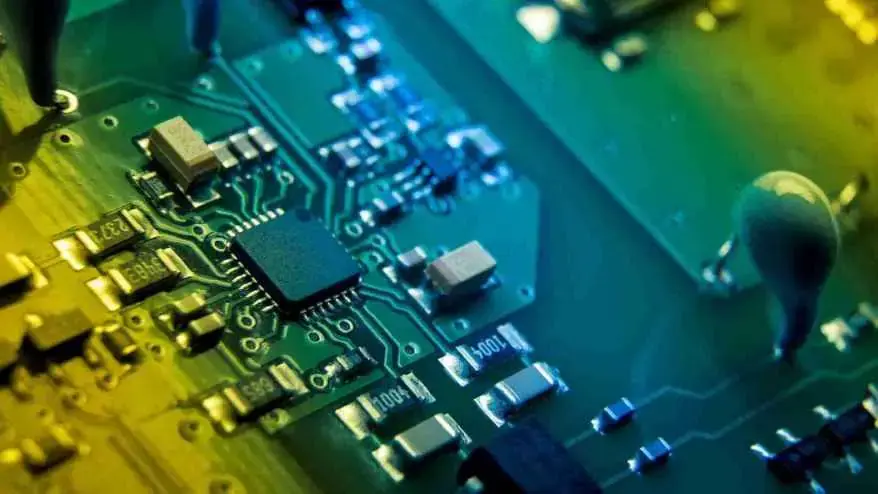
FAQs
Q: What are intrinsic semiconductors?
A: Intrinsic semiconductors are pure semiconductors that have not been doped with impurities. They have a balanced number of charge carriers, meaning the number of electrons in the conduction band is equal to the number of holes in the valence band.
Q: What is the difference between intrinsic and extrinsic semiconductors?
A: The main difference between extrinsic and intrinsic semiconductors lies in the addition of impurities. Intrinsic semiconductors are pure and have no added impurities, while extrinsic semiconductors are doped with specific impurities to enhance their conductivity.
Q: How does doping affect the conductivity of an extrinsic semiconductor?
A: Doping increases the conductivity of an extrinsic semiconductor because it introduces additional charge carriers. Depending on the type of impurity added, it can create either holes (in the case of p-type extrinsic semiconductors) or extra electrons (in the case of n-type extrinsic semiconductors).
Q: What is a p-type extrinsic semiconductor?
A: A p-type extrinsic semiconductor is created when a semiconductor is doped with an element that has fewer valence electrons than the semiconductor material, such as silicon. This results in the creation of holes in the valence band, which increases the material’s conductivity.
Q: What are n-type extrinsic semiconductors?
A: N-type extrinsic semiconductors are formed when a semiconductor is doped with an element that has more valence electrons than the semiconductor itself, such as phosphorus in silicon. This leads to an increase in the number of electrons available for conduction, thus enhancing the conductivity of the material.
Q: What role do energy levels play in semiconductors?
A: Energy levels in semiconductors determine the availability of electrons for conduction. The energy states must be sufficiently close for electrons to be excited from the valence band to the conduction band, which is particularly important in determining the conductivity of intrinsic and extrinsic semiconductors.
Q: How does temperature affect the conductivity of semiconductors?
A: The conductivity of semiconductors increases with temperature due to thermal excitation, which allows more electrons to jump from the valence band to the conduction band. This effect is more pronounced in intrinsic semiconductors compared to extrinsic semiconductors, where doping influences the charge carrier concentration.
Q: Can you explain the term ‘extrinsic semiconductor question’?
A: The term ‘extrinsic semiconductor question’ refers to inquiries that focus on the properties, types, and behavior of extrinsic semiconductors, especially how they differ from intrinsic semiconductors and how doping affects their electrical characteristics.
Q: What are the two types of semiconductors?
A: There are two kinds of semiconductors. Firstly, intrinsic semiconductors are pure and have nothing added to them. In contrast, extrinsic semiconductors have other materials mixed in. Consequently, this changes how they work with electricity and helps them carry electricity better.
References
- Schol, P. R., Zhang, W., Scharl, T., Kunzmann, A., Peukert, W., Schröder, R. R., & Guldi, D. M. (2022). Intrinsic and extrinsic incorporation of indium and Single‐Walled carbon nanotubes for improved ZNO‐Based DSSCs. Advanced Energy Materials, 12(13). https://doi.org/10.1002/aenm.202103662
- Yang, J., & Ueno, N. (2022). Disappearing of the Fermi level pinning at semiconductor interfaces. doi:10.48550/ARXIV.2202.10422 https://arxiv.org/abs/2202.10422
- Rosero, O. L. H., Melo, J. I., & Tamborenea, P. I. (2019). Spin-orbit effects in the hydrogenic impurity levels of wurtzite semiconductors. Retrieved from http://arxiv.org/abs/1904.03374
Additionally, to stay updated with the latest developments in STEM research, visit ENTECH Online. This is our digital magazine for science, technology, engineering, and mathematics. Further, at ENTECH Online, you’ll find a wealth of information.


